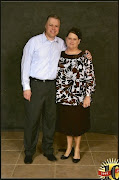Proverbs 22:28 (KJV) Remove not the ancient landmark, which thy fathers have set.
Proverbs 23: 10 (KJV) Remove not the old landmark; and enter not into the fields of the fatherless:
What was the purpose of the boundary stones or landmarks? Beyond the obvious?
When the Children of Israel settled the Promised Land, it was eventually divided between the 12 tribes of Israel. Each tribe had a specific portion given to them. It was a sacred trust because this was tied to the Abrahamic Covenant.
Remember the story of Ahab, the pouting Potentate? He wanted Naboth’s vineyard because it was close to his Palace: “Give me your vineyard and I will give you something better”. But Naboth refused because this was a sacred trust. When Jezebel came in and saw her husband Ahab with his bottom lip stuck out, pouting, she said, “What’s wrong honey-bun?” She then devised a scheme to lie and cheat and Naboth was slain and Ahab got the vineyard…but the story didn’t end there—God eventually made Ahab and Jezebel pay with their own lives and the dogs that licked Naboth’s blood, licked Jezebel’s blood in the same spot. So we conclude that the allotment of land was indeed sacred.
The second purpose was for memorials:
When the traveler in days of old walked through the land of Canaan, he came here and there upon significant memorials that had been established by those who had been recipients of God’s blessings and divine visitations. These places were marked by landmarks, stones, or other means. He might pass by the place where God had delivered Jacob from Laban, and where Jacob put up a pillar as a testimony that beyond that spot his enemies should not come over. As the traveler went on, he might come to the place where the great altar was built by the two and ½ tribes, to keep them reminded that they belonged to Israel, though they were on the other side of Jordan. Then, again, he would come to the place where the stones were set up at Bethel, as a mark that God revealed Himself to Jacob there. Next, he might come to Gilgal, where the Lord had caused the people to go over the Jordan on dry land; and afterwards to the stone of Ebenezer, which had been set up to show that the Lord had delivered them. And so when their children or strangers would pass by the stones they would be prompted to ask, “What is the meaning of these stones?” And—the people would tell them of God’s blessings of power and deliverance in the past, and God’s covenants of mercy for the future.
Do we have Landmarks?
When you sell or buy a parcel of land, as part of the process, a survey is called for. It is interesting to see how they come in and take the measurements, but before they start, they have to find the markers or pins that have been driven deep in the earth for all those in the future to be able to survey from those lynch pins. They are on record in the county courthouse. If you sell your land and they have to do a survey, the surveyors bring out their instruments and locate those old markers that have been there for many years.
What about the Believer?
As the Christian passes through the better land of God’s Word, he comes upon marker stones or landmarks; if you stop to observe, you will find stories and legends of what God has done. They are there for a reason—they tell a story! We have the assurance that Jesus Christ is the same yesterday, today and tomorrow. There is proof of the fact that God is a covenant-keeping God.
These events are markers for us—for each individual believer—for the church. Think about some of these—you could have your own list, also, in your church.
1. The virgin birth.
2. The death, burial and resurrection of Jesus
3. His sinless life, and many other markers.
4. Communion Memorial
The landmarks told a story. The landmarks were sacred. They marked the boundaries of their inheritance that was given to them by God. Do we value the landmarks of our Christian heritage?
Am I saying I would like to go back to sawdust floors, tents or brush arbors? No, I am speaking of the significant revelations about the power of God that came with the great revivals that birthed the movement that we are the recipients of. What are we teaching our children about our heritage?
Each new generation has new ways and new ideas. Time changes things and people. Music changes, styles change, but there should be some things that never change. We should have some boundary stones set out in our life, in our church that will cause the youth who come behind us to ask the question, “What does this mean?
As leaders and future leaders, we have a responsibility to pass along and keep alive those things that make us distinct.





3 comments:
Greetings! Saw your emerging church article in Google Blogsearch and came to read. Found this post.
As you seem to be pro-landmarks, what about Luther and Calvin removing the Ancient Landmarks (sacraments, the Eucharist, etc.)? After removing ancient landmarks, "Reformers" now argue to save the few remaining landmarks? Interesting...
Thanks for your thoughts Timothy. I come from a Pentecostal background and just as reformers have changed the Catholic church there are those who would remove (restate) landmarks of our Pentecostal heritage.It is from that position that I argue that we "hold these truths" to be dear to our heart.
This is very insightful.
Post a Comment